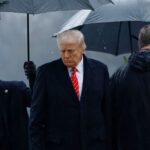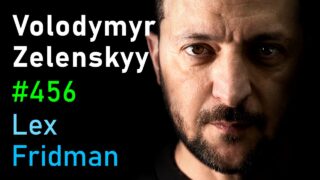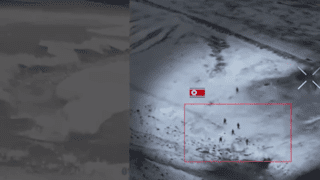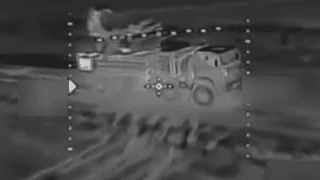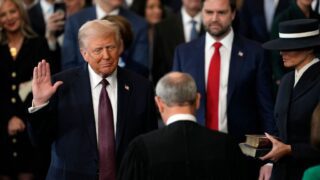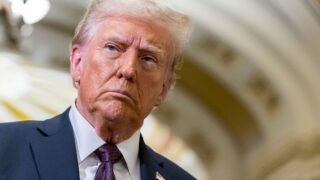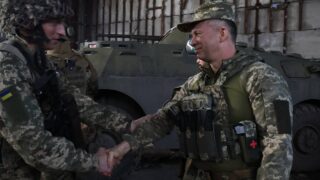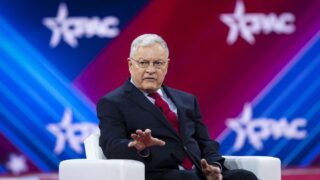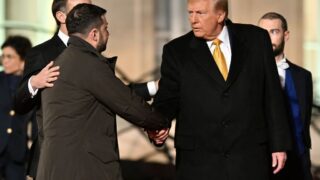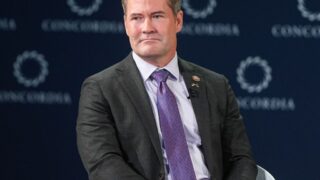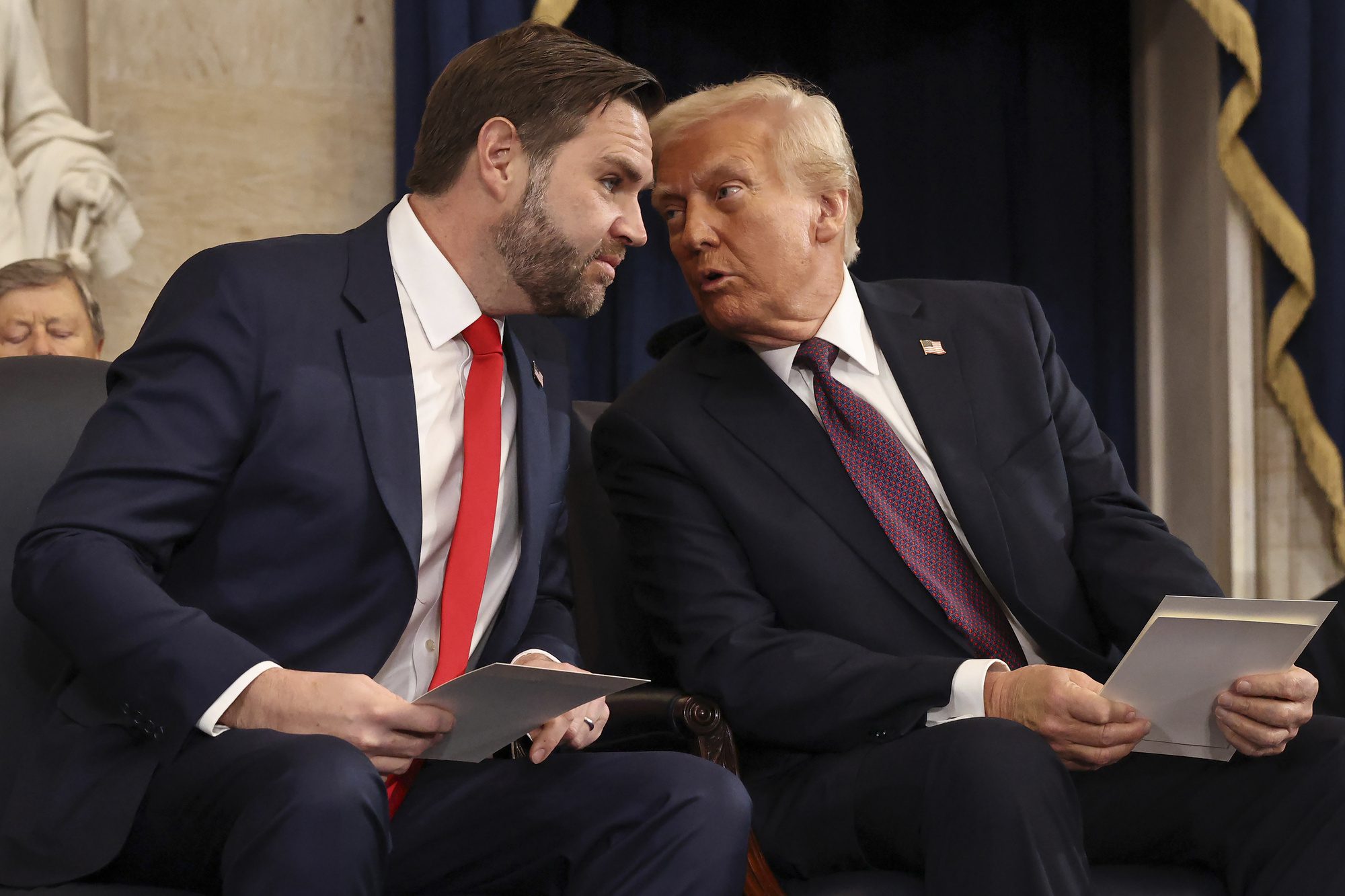
Reality dawns: Trump’s 24h Ukraine vows meet Moscow
Donald Trump’s return to the White House has revealed the first major shift in his presidential priorities: tempering expectations about a swift end to the Ukraine war.
Throughout his campaign, Trump repeatedly claimed he could broker peace between Vladimir Putin and Volodymyr Zelenskyy in just 24 hours – less time than it takes to fly from Washington to Kyiv.
But this ambitious timeline has steadily expanded since his November election victory as he grapples with the war’s complexity. His latest estimate suggests six months might be needed, while his special envoy to Ukraine and Russia, Keith Kellogg, proposes a 100-day roadmap.
The tone shift became evident during Trump’s inauguration day when he delivered an unexpectedly sharp assessment of Putin’s position.
“He’s destroying Russia by not making a deal,” Trump declared upon arriving at 1600 Pennsylvania Avenue.
This language underscores the complex negotiations ahead, contrasting sharply with the simpler narratives of his campaign.
Secretary of State Marco Rubio further tempered expectations, dismissing the idea of rigid timelines for peace.
“Anytime you bring an end to a conflict between two sides, neither of whom can achieve their maximum goals, each side is going to have to give up something,” he told CNN in his first remarks after Senate confirmation.
Despite characterizing the war’s end as Trump’s top priority, Rubio cautioned that the path to peace remains complex even with some groundwork already laid.
The stakes couldn’t be higher for Ukraine, whose defense still relies heavily on American support. Euromaidan Press turned to Ukrainian officials and experts for their take to unravel the nuances of Trump’s shifting strategy and what it might mean for the war.
Trump backs away from 24-hour peace promise
As Trump’s team prepared to take over diplomacy, his campaign’s “24-hour peace” pledge evolved into a more calculated timeline. This significant extension reflects what experts see as a growing recognition of the war’s complexities within Trump’s circle.
“As Trump’s incoming administration receives both public analysis and classified intelligence data, they understand that even under the most optimistic scenario, this could stretch for months,” explains Ihor Chalenko, head of the Center for Analysis and Strategies think tank.
In his conversation with Euromaidan Press, Chalenko emphasized that the transition team has effectively abandoned the campaign’s day-one solution as unrealistic.
The shift signals a broader recalibration of the administration’s approach to ending the war. Oleksandr Kraiev, director of the North America Program at the Foreign Policy Council Ukrainian Prism, sees this extended timeline as evidence of a more grounded understanding emerging within Trump’s team.
“It is no longer a question of doing everything in 24 hours, making a quick call to Putin-Zelenskyy, and getting it all done,” Kraiev told Euromaidan Press. “Trump himself does not believe in this.”
Trump opens separate talks with Putin and Zelenskyy
A day after his inauguration, Trump suggested he may impose additional sanctions on Russia as the war in Ukraine nears its third anniversary.
Asked whether he would put additional sanctions on Russia if Vladimir Putin fails to come to the negotiating table, Trump said, “Sounds likely.” He added that he would “look into” whether the US would be sending additional weapons to Ukraine.
“We’re talking to Zelenskyy. We’re going to be talking with President Putin very soon, and we’ll see how it all happens,” Trump said.
This diplomatic approach began taking shape well before his inauguration. On 10 January, Trump announced his intention to meet directly with Putin, stating, “He wants to meet, and we are setting it up.” Acknowledging the immense toll of the war, Trump added bluntly, “We have to get that war over with. That’s a bloody mess.”
Parallel diplomatic channels have opened with Kyiv. Andriy Yermak, head of the Ukrainian Presidential Office, confirmed that preparations for Zelenskyy’s meeting with Trump are underway, though no specific date has been set. These separate engagements suggest a step-by-step approach, contrasting with campaign promises of instant resolution.
The Kremlin’s response indicated a different timeline. Dmitry Peskov, Putin’s spokesman, stated that while Russia remains open to dialogue, no formal meeting request has been received. At Russia’s Security Council meeting, Putin said Moscow was open for dialogue with the United States “on an equal basis” while maintaining his nearly three-year-old justification for the invasion: that the West had refused to discuss Moscow’s ultimatum-style geopolitical demands.
Ukrainian analysts believe the diplomatic discord is part of a deliberate strategy. According to Ihor Chalenko, the mixed messaging represents “an attempt by each side to create a favorable framework for negotiations.” He expects the apparent disagreements to continue.
“We will see some out-of-sync statements, but it is clear that there will be contacts both by phone and in person. The only question is when it will happen,” Chalenko says.
Meanwhile, Ukrainian officials view Trump’s push for talks through a domestic political lens.
“Trump wants to show his voters that he is trying to fulfill his election promise to end the war. And he will indeed try to do so,” says Oleksandr Merezhko, chair of Ukraine’s parliamentary foreign affairs committee.
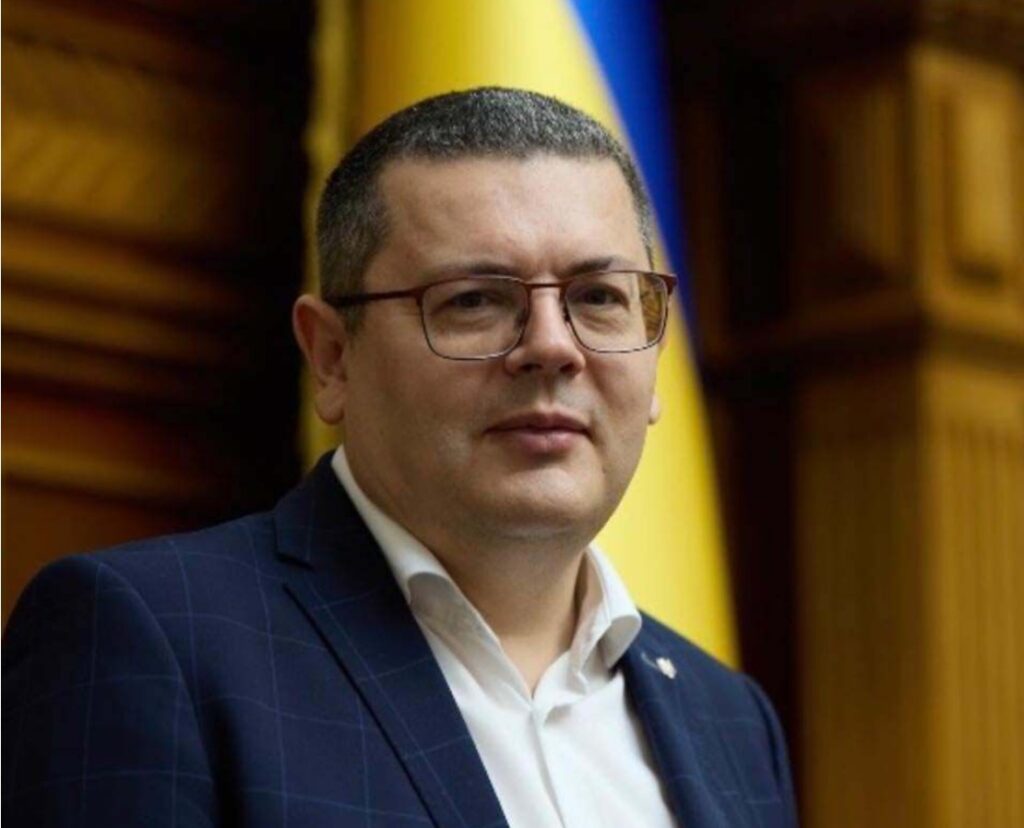
What Trump and Putin can discuss
The contours of potential Trump-Putin negotiations are beginning to emerge, though with sharply different expectations from various sides. Vadym Ivchenko, a member of Ukraine’s parliamentary defense committee, suggests Trump is crafting his approach based on broader US interests rather than focusing solely on Ukraine.
“Trump would likely approach the negotiations from a broader geopolitical perspective, with Ukraine being one component of a larger US-Russia strategic dialogue,” Ivchenko told Euromaidan Press.
He envisions a possible scenario where Trump might leverage US interests in regions like Panama, Cuba, or Venezuela as part of a larger diplomatic bargain with Putin that would include Ukraine.
Other analysts, like Oleksandr Kraiev, see a more direct path.
“Trump’s goal is to get Ukraine and Russia to start negotiations. The aim is a ceasefire, and Ukraine should not be disadvantaged from the beginning. This doesn’t mean Trump favors Ukraine; he wants these negotiations to succeed,” Kraiev explains.

Putin’s demands, however, remain unchanged since June 2024. According to a January 10 Financial Times report, citing a former Kremlin official and a source close to Putin, Russia’s leader continues to insist on blocking Ukraine’s NATO membership and reducing NATO’s military presence on its eastern flank. The Institute for the Study of War (ISW) confirms this analysis while noting additional demands revealed during Putin’s December Direct Line presentation:
- The replacement of Zelenskyy’s government under the pretext of “denazification”
- Complete demilitarization of Ukraine
- Surrender of significant eastern and southern Ukrainian territories, including areas Russia doesn’t currently control.
Former US Special Representative for Ukraine Kurt Volker sees a challenging path ahead.
“Putin’s retention of Ukraine’s territories and restriction of its Euro-Atlantic path will be perceived by the world as a victory for Putin and a loss for Trump,” he notes, though adding that “Trump shows no signs of agreeing to a NATO ‘pullback’ from Putin’s eastern borders or easing sanctions against Russia.”
Security guarantees emerge as key to peace deal
After the dust settled on the US election, the prospect of freezing the war emerged as a serious policy consideration. A 4 December Reuters report revealed that while Trump’s peace plan remains in flux, his advisers generally favor removing Ukraine’s NATO prospects for the foreseeable future and freezing current battle lines. They also support creating a demilitarized zone patrolled by European troops as a security guarantee for Ukraine.
These proposals immediately set off alarm bells in Kyiv. President Zelenskyy’s office has explicitly rejected any concessions within Ukraine’s internationally recognized 1991 borders, a position backed by an overwhelming 84% of Ukrainians who oppose territorial compromises even if it means a longer war.
Yet, as Trump’s inauguration approached, Western discourse increasingly gravitated toward potential ceasefire arrangements. Former US Special Representative Kurt Volker suggested a “golden mean” where “Ukraine recognizes that it will not return the territories by force” while maintaining its refusal to recognize Russian occupation.
Ukrainian analysts warn of significant risks in this approach.
“Ukraine’s participation in the negotiation process is crucial because the principle of ‘nothing about Ukraine without Ukraine’ must be maintained,” says Ihor Chalenko.
He emphasizes that any war freeze along current lines could result in substantial territorial losses unless accompanied by robust security guarantees.
Vadym Ivchenko sees parallels with the Minsk Agreements of 2014-2015, failed peace deals that followed Russia’s first invasion of Ukraine and occupation of parts of Donbas. France and Germany acted as intermediaries in the so-called Normandy Format. But now, he warns, such agreements would involve much larger territories.
“While we stand alone today, if something happens tomorrow, we would all fight against Russia together,” he explains, pointing to possible security guarantees from Budapest Memorandum signatories – the US, UK, Germany, France, and Poland.
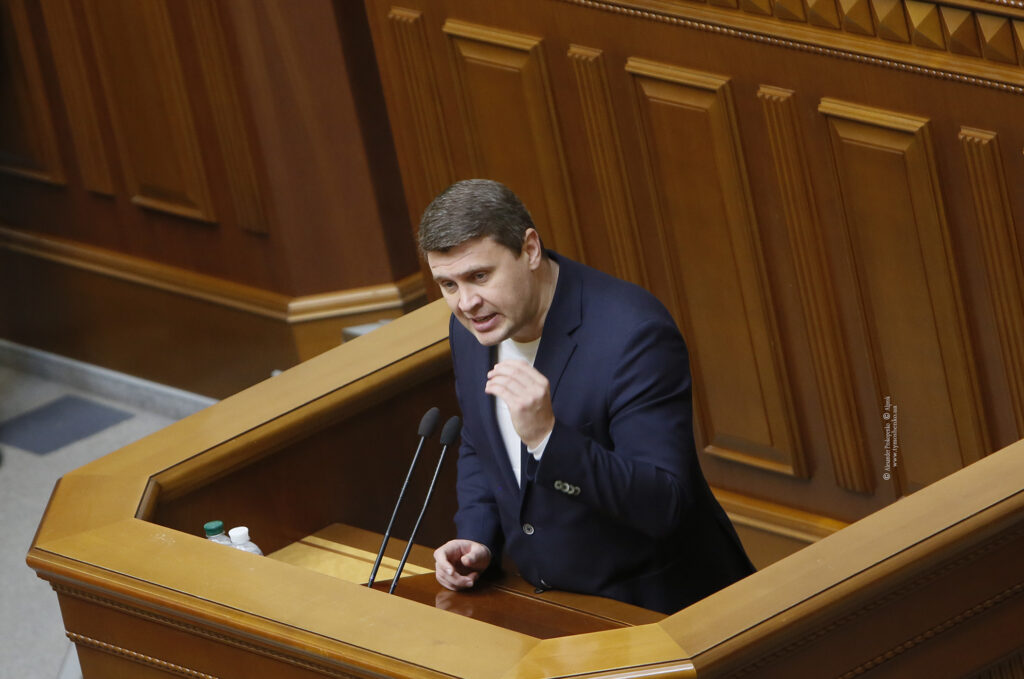
The role of Europe emerges as crucial in these scenarios.
“If Trump wants to shift security guarantees and future support primarily to the EU, then Europe must have a clear voice and cannot remain a silent observer in upcoming diplomatic moves,” Chalenko argues.
Volker maintains that NATO membership remains “the only effective guarantee of security for Ukraine” and “should not be removed from the ‘menu’ of options,” suggesting that “Europe can convince Trump to accept Ukraine.”
Trump holds military aid card in peace talks
Experts suggest that Trump enters negotiations with significant leverage. While critical of extensive aid to Ukraine during his campaign, his position as the largest military supporter of Ukraine—accounting for nearly 52% of total international defense assistance since the invasion—provides powerful bargaining tools.
The Biden administration worked to strengthen this hand in its final months, deploying a series of major aid packages: $725 million in November (the largest since April), $2.5 billion in December, and $988 million through the Ukraine Security Assistance Initiative (USAI) for HIMARS ammunition and other equipment.
Analysts expect Trump to maintain this support but with a sharp focus on US interests.
“The support will likely continue because otherwise, the US would appear weak and as if it were abandoning its partners and allies. This would be completely inappropriate for Trump,” explains Chalenko.
Ivchenko suggests Trump might leverage both economic sanctions and military aid to bring all parties to the negotiating table. At the same time, Merezhko highlights additional pressure points, such as oil prices and sanctions against Russia’s military suppliers.
“The aid must continue because the negotiations depend on it,” argues Oleksandr Kraiev. “This strategy—negotiating from a position of strength—can only be achieved by continuing to support Ukraine.”
However, he cautions that Trump’s motivation is pragmatic rather than altruistic.
“Trump will provide aid to Ukraine not because he likes Ukraine, but because it is leverage for negotiations favorable to Trump,” Kraiev added.
Yet Kraiev cautions against expectations of transformative diplomatic breakthroughs. In his assessment, Trump’s definition of success may be far more limited than Ukraine’s hopes: “Knowing Trump, for him, ending the war could simply mean stopping the shooting. He would say, ‘Look, I ended the war. See how great I am.’”
The warning suggests a potential gap between Trump’s pursuit of a quick victory and Ukraine’s broader goals for territorial integrity and security guarantees.
Read more:

